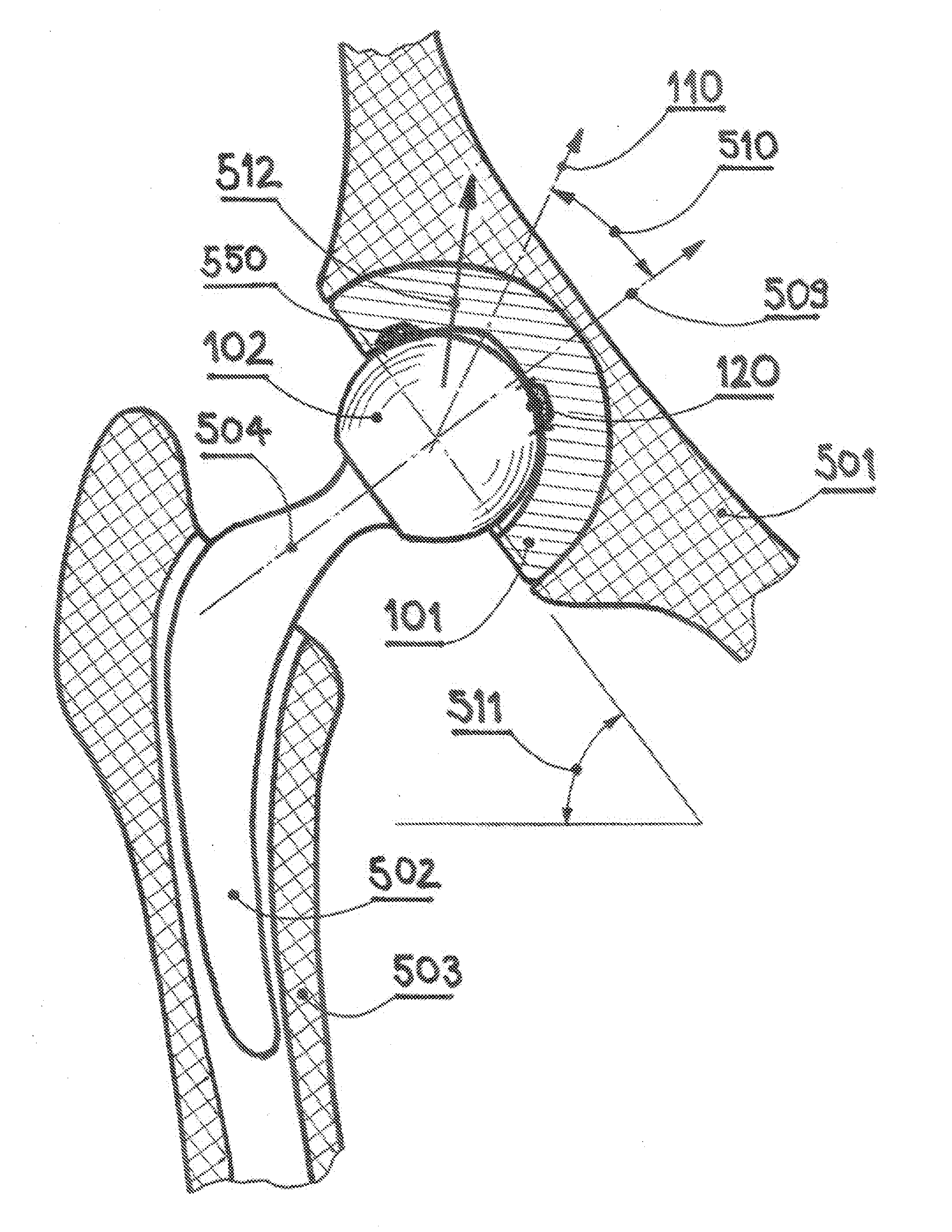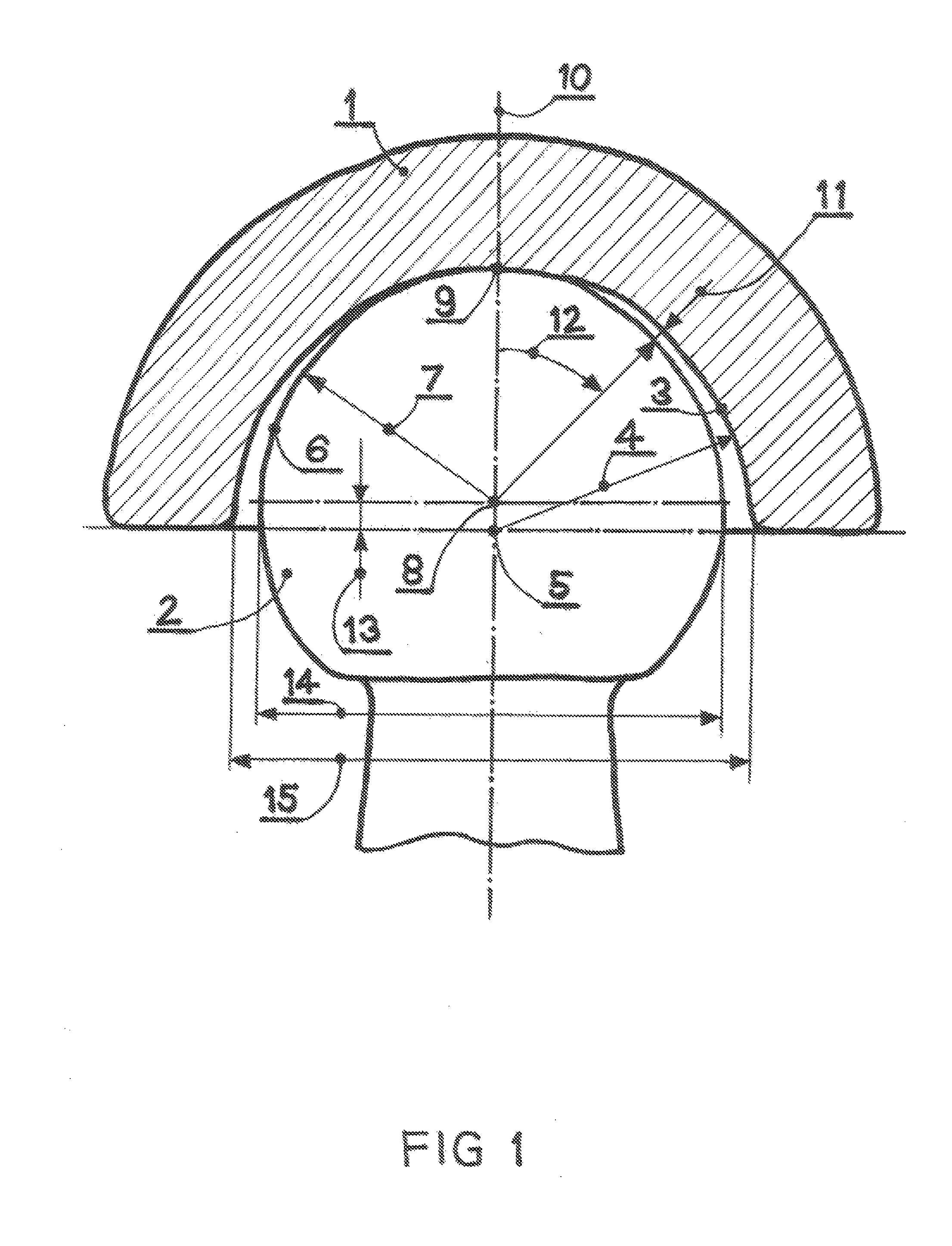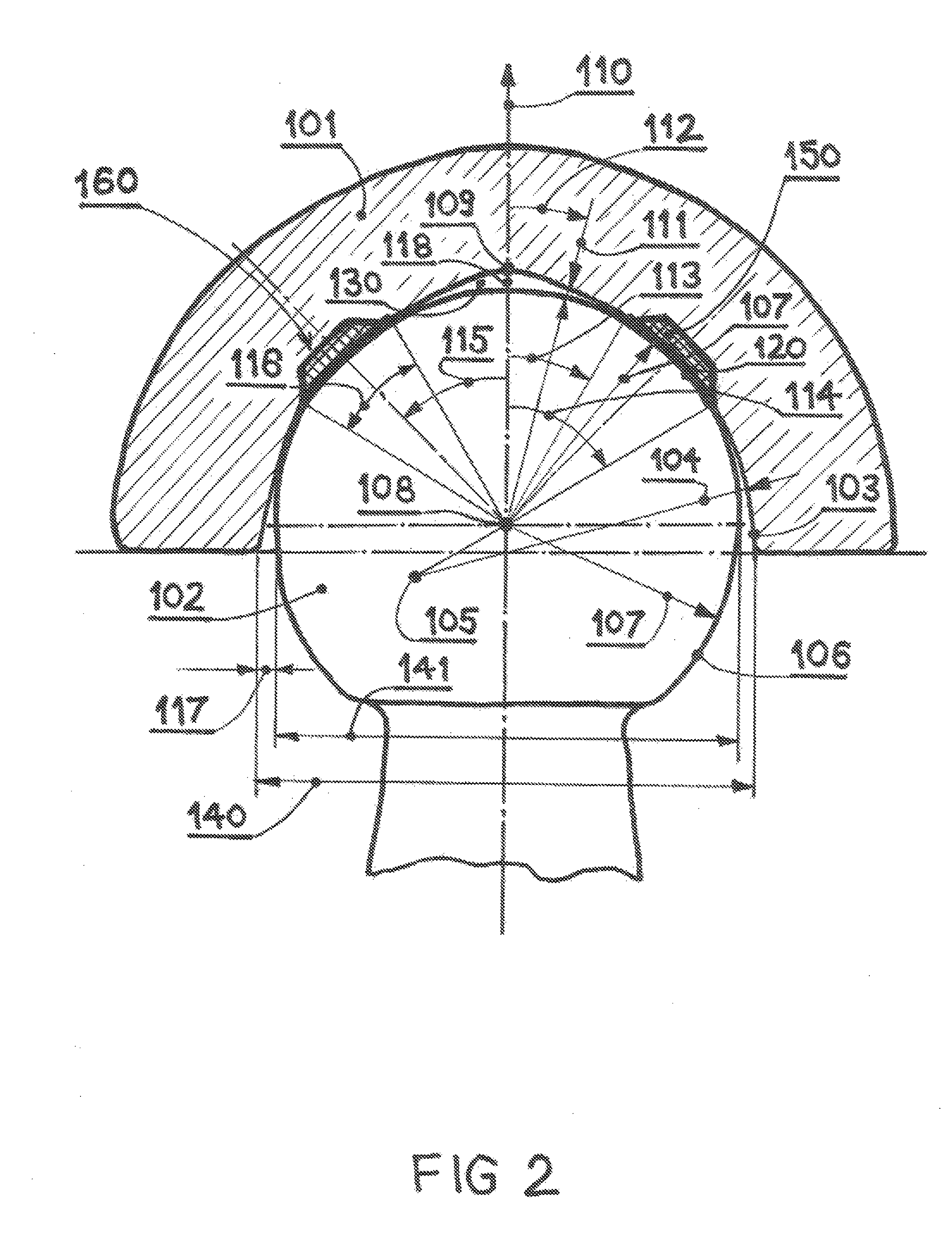Wear-Reducing Ring for Articulations in Total Joint Replacements
a total joint replacement and wear-reducing technology, applied in hip joints, prostheses, medical science, etc., can solve the problems of joint replacement dysfunction, bone loss, joint component loosening, etc., and achieve the effect of reducing wear and high polish
- Summary
- Abstract
- Description
- Claims
- Application Information
AI Technical Summary
Benefits of technology
Problems solved by technology
Method used
Image
Examples
Embodiment Construction
[0067]For the sake of simplicity and clarity, we illustrate the artificial joint articulation and the prostheses of the invention with a total hip joint articulation. The same technical principles and design can be used for articulations of other joint prostheses, including those having less conforming surfaces and a lesser degree of coverage. The present invention represents an improvement over a prior invention by the inventors as set forth in PCT Patent Application No. WO2008 / 058756, published on May 22, 2008, and over that of U.S. Patent Application Publication No. 2010 / 0063589 entitled “Wear-reducing Geometry of Articulations Total Joint Replacements” which is incorporated herein, in its entirety, by reference (collectively, “the Tepic Applications”). The Tepic Applications disclose a joint prosthesis, such as a hip prosthesis, in which the convex and concave components differ in shape to provide a broad contact surface. As set forth in the Tepic Applications, the differences i...
PUM
 Login to View More
Login to View More Abstract
Description
Claims
Application Information
 Login to View More
Login to View More - R&D
- Intellectual Property
- Life Sciences
- Materials
- Tech Scout
- Unparalleled Data Quality
- Higher Quality Content
- 60% Fewer Hallucinations
Browse by: Latest US Patents, China's latest patents, Technical Efficacy Thesaurus, Application Domain, Technology Topic, Popular Technical Reports.
© 2025 PatSnap. All rights reserved.Legal|Privacy policy|Modern Slavery Act Transparency Statement|Sitemap|About US| Contact US: help@patsnap.com



